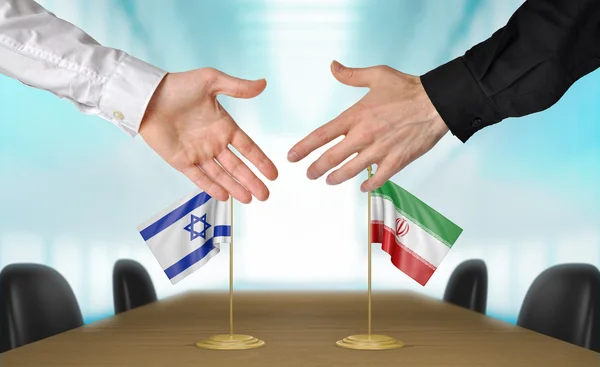When discussing global politics, one question often surfaces: Why are Iran, America, and Israel always at odds? With 57 Islamic countries around the world, why is Iran the primary target of American and Israeli scrutiny?
To understand this complex geopolitical tension, we must go back—way back—to the era of World War II.
A Brief History: The Fall of a Monarchy and the Rise of Resistance
During WWII, most nations aligned either with Hitler or the British Empire. The then-Shah of Iran leaned toward Hitler, which drew the ire of Britain. In retaliation, the British invaded Iran, eventually forcing the Shah to surrender. But they imposed one condition: he must abdicate, and his Western-educated 22-year-old son, Mohammad Reza Pahlavi, would take the throne.
This new Shah was a puppet of the West. He was obsessed with Westernizing Iran—banning the hijab, shutting down madrasas, and encouraging alcohol and music. The country became a paradox: an Islamic land exporting alcohol globally.
The Shah even advised King Faisal of Saudi Arabia to modernize like the West. Ironically, today, Saudi Arabia pressures Iran to liberalize.
But the Iranian scholars resisted. The most prominent among them was Ayatollah Ruhollah Khomeini, who openly criticized the Shah. When the Shah could no longer tolerate his influence, he exiled Khomeini—who then settled in Iraq.
The Revolution Brews in Exile
From exile, Khomeini began recording sermons and smuggling them into Iran. These speeches quickly became viral, turning Khomeini into a symbol of resistance. Despite his powerful army and American support, the Shah made a critical mistake—he threw the “Flames of Persia”, the most lavish party in Iranian history.
Gold-plated dinners, 600 limousines, and a golden throne showcased the Shah’s wealth while everyday Iranians struggled to eat. The extravagance only fueled the revolution.
Soon, millions were chanting Khomeini’s name. The Shah fled Iran in fear, and after 14 years in exile, Khomeini returned to a hero’s welcome, with over 7 million people lining the streets—a world record.
The Birth of Anti-American Sentiment
Upon his return, the revolution began. Iranian students stormed the U.S. Embassy in Tehran, capturing 52 Americans. Khomeini refused to release them unless the Shah was extradited. This incident marked the beginning of Iran’s bitter feud with America.
Saddam Hussein Enters the Picture
Not long after, Saddam Hussein became Iraq’s leader. Alarmed by Khomeini’s call for Muslim revolutions, Saddam—backed by the U.S. and Gulf Arab states—launched a war against Iran. The brutal conflict lasted 8 years and claimed over a million lives, yet Saddam failed to topple Khomeini.
After the war, Khomeini died, and Ayatollah Ali Khamenei, one of his disciples, became Iran’s new Supreme Leader.
The Nuclear Question: Fact or Fiction?
After surviving war and isolation, Iran’s leadership concluded that the U.S. and Israel would never leave them alone—unless they had nuclear weapons.
But building an atomic bomb isn’t easy. Enter Pakistan, the first Islamic country with nuclear capability. Dr. Abdul Qadeer Khan, the father of Pakistan’s atomic program, secretly helped Iran by sending centrifuge technology.
These machines enrich uranium. At 5% enrichment, it powers cities; at 90%, it becomes a bomb.
When the U.S. discovered Iran’s activities, it tolerated Pakistan’s nuclear arsenal (due to their alliance) but accused Iran of developing weapons of mass destruction—along with Saddam Hussein’s Iraq.
The world now knows these were false claims, especially in Iraq’s case. But it gave America a reason to invade and topple Saddam. Iran became the next target.
Khamenei’s Nuclear Fatwa: A Game Changer
Just when the U.S. seemed ready to strike, Ayatollah Khamenei issued a historic fatwa: declaring atomic bombs forbidden in Islam.
He said:
> Islam prohibits the killing of innocents even in war. Nuclear weapons are indiscriminate and unjust.”
To prove his sincerity, Iran allowed UN inspectors to examine their nuclear facilities. While the facilities mirrored Pakistan’s designs, no bombs were found.
Under immense pressure, Dr. Khan admitted to selling the technology and was placed under house arrest in Pakistan.
The Assassination of Qasem Soleimani
In 2020, Trump ordered a drone strike that killed General Qasem Soleimani, one of Iran’s most powerful military leaders. This act shocked Iran and humiliated its people.
In response, Iran elected Ebrahim Raisi, a hardline president who accelerated the nuclear program and increased support for groups opposing Israel.
But in a sudden twist, Raisi died in a helicopter crash. His replacement was a moderate leader, who echoed Khamenei’s fatwa and declared:
> Iran will never build nuclear weapons. We’re ready to engage with the world.
Why Israel Still Wants War
Despite Iran’s consistent stance, Israel continues pushing the narrative that Iran is secretly building nuclear weapons—claims made repeatedly for over 25 years with no evidence.
Israel alleges that Iran is behind plots to assassinate U.S. leaders, and in retaliation, has been assassinating Iranian scientists and advisors one by one trying to provoke Iran into making a mistake that could justify a U.S. military response.
The Real Reason: A Battle of Ideologies
At its core, the Iran-Israel-America conflict isn’t just about nuclear weapons—it’s about ideology, influence, and control.
America wants global dominance and sees an independent Iran as a threat.
Israel fears Iran’s growing influence over anti-Israel movements.
Iran, on the other hand, wants to lead the Islamic world without bowing to Western pressure.
This isn’t just a political conflict. It’s a clash of visions between empire, survival, and sovereignty.
Until these fundamental issues are addressed, the cycle of fear, blame, and conflict will continue—and the people, as always, will pay the price.
History often repeats itself—but it doesn’t have to. If we look beyond the propaganda and seek the truth, maybe the next chapter won’t be one of war—but one of understanding.


